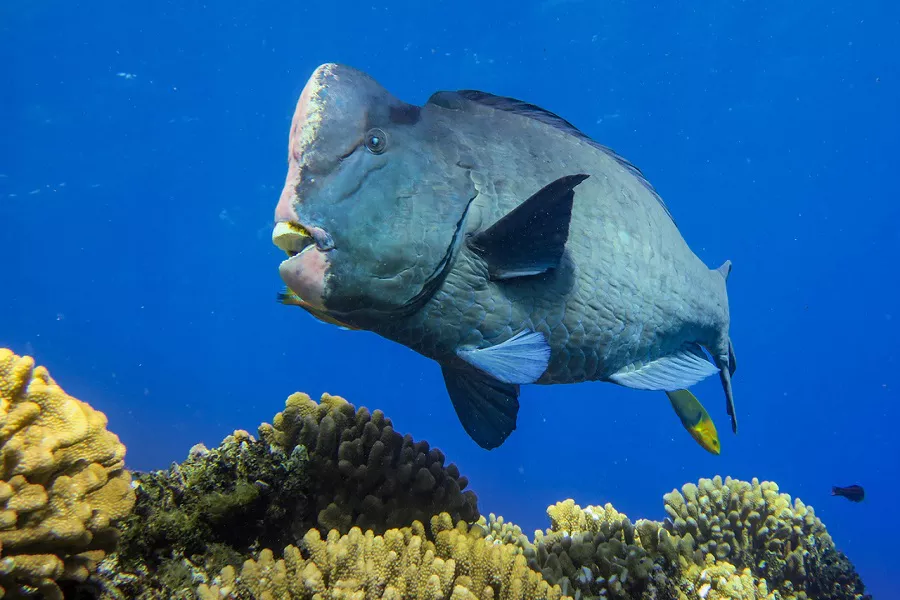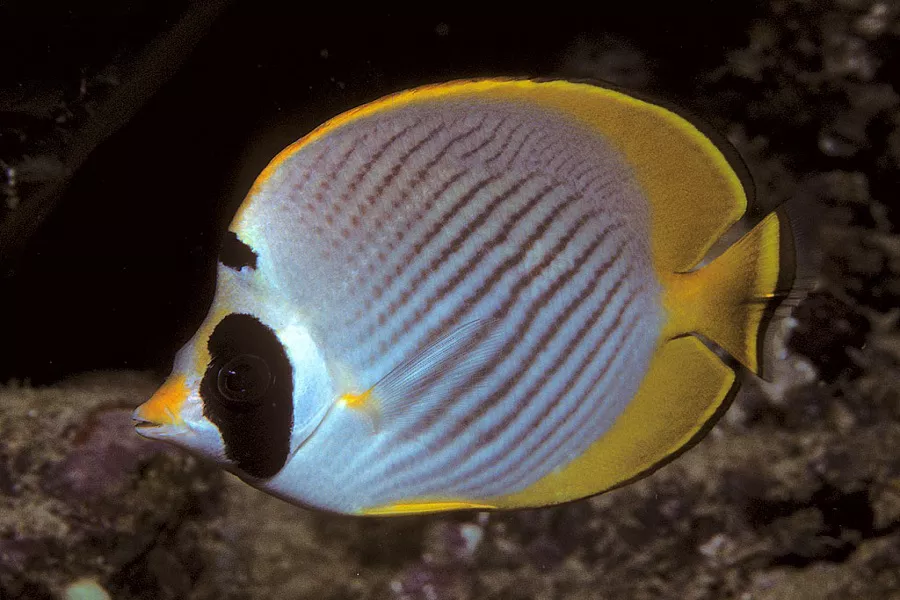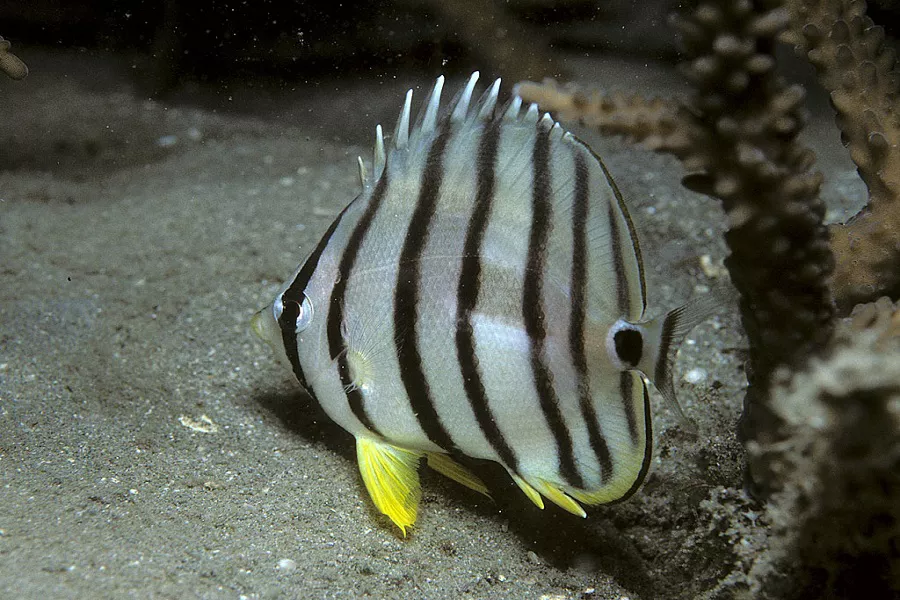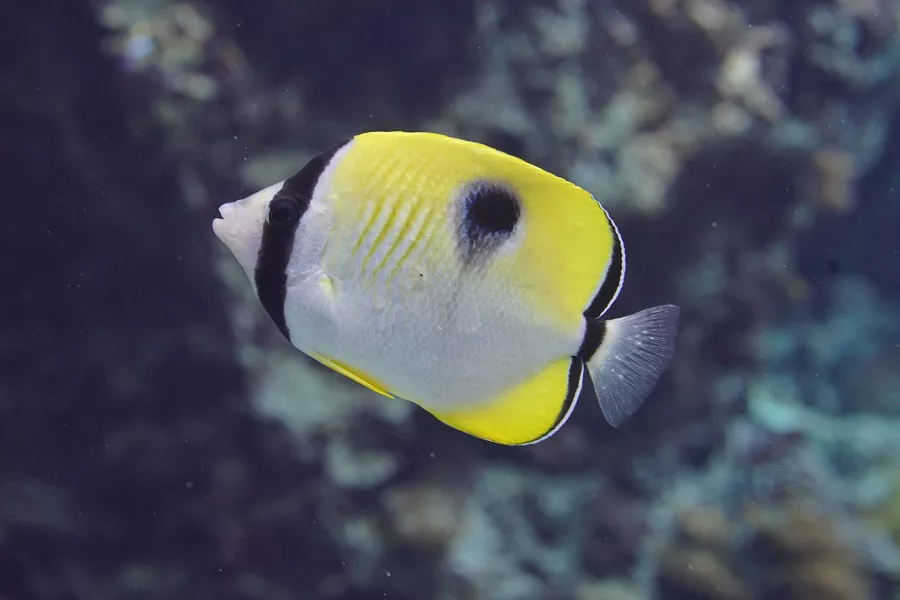What is bumphead parrotfish?
The bumphead parrotfish (Bolbometopon muricatum): The fish is 25 cm long, and the largest can reach 130 cm. Body elongated and slightly flattened. The profile of the head is vertical and the outer surface between the tooth plates has granular protrusions. The posterior nostrils are significantly larger than the anterior nostrils, and the forehead of the head protrudes forward. Beginning females are gray-black with white spots, and terminal males are blue-green all over. The caudal fin of the juvenile fish is a round tail, and the upper and lower lobes of the adult fish are elongated into a double concave tail. There are 9 dorsal fin spines, 10 dorsal fin soft rays, 3 anal fin spines, and 9 anal fin soft rays.
What does a bumphead parrotfish look like?
Humphead parrotfish body elongated and slightly flattened. When the body length is about 25 cm, the maximum body length can reach 130 cm, and the weight can reach up to 45 kg. The forehead of the head protrudes forward, and the outline of the head can be close to the vertical angle. The posterior nostrils are significantly larger than the anterior nostrils. There are granular protrusions on the outer surface of the tooth plate; each upper pharyngeal bone has 3 rows of molar-like pharyngeal teeth, and the latter row is not developed. The anterior midline scales of the dorsal fin are about 2-5 (usually 4); the cheek scales are 3 rows, the scales are large, and the bottom row has 1-2 scales; the interoperculum has 1 row of scales. Gill rakers number 16-18. The pectoral fin has 15-16 soft rays; the caudal fin is round in juveniles and slightly double concave in adults. The body is dark gray in the initial stage, with white spots scattered on the sides of the body, and gradually becomes a full dark green to greenish-brown in the final stage, with light purple stripes along the scale rows on the body; the front edge of the head is often pale Green to pink; fins the same color as the body.
life habits of bumphead parrotfish
Wrumphead parrotfish prefer to swim in groups of reef bays or off coral reefs in water depths of 1 to 30 meters. It feeds on live coral as its main food, and the polyp skeletons excreted after digestion are an important source of coral sand for the formation of shallow reef areas. Alert by nature, there is a habit of sleeping together in groups at night. Adult humming parrotfish usually live in groups, especially in the early morning, when they can be seen queuing up on the reef for work”, they eat algae on stony corals as their main food. They eat coral crunch, diving Humans can hear it from a considerable distance. Due to its large size, an adult fish can chew up to five tons of coral skeleton a year, topping the list of fish that eat live coral. After the corals and algae are digested, the broken coral skeletons are excreted back into the sea. These fragments of coral skeletons are the main ingredients of white sand beaches. At night, they will settle very quietly in the caves and crevices of the coral reefs.
bumphead parrotfish rearing
On the early mornings of the monthly full moon, large clusters spawn within the reef, in crevices and passageways. After the female has spawned, the male is fertilized in the water. At this time, there are about 100 fish that spawn and gather together. Wrump-headed parrotfish live to be around 40 years old.
Reminder: For more knowledge about tiger fish, arowana, australian lungfish, please pay attention to: mtedr.com, to provide you with types of aquarium fish and fish care.


























